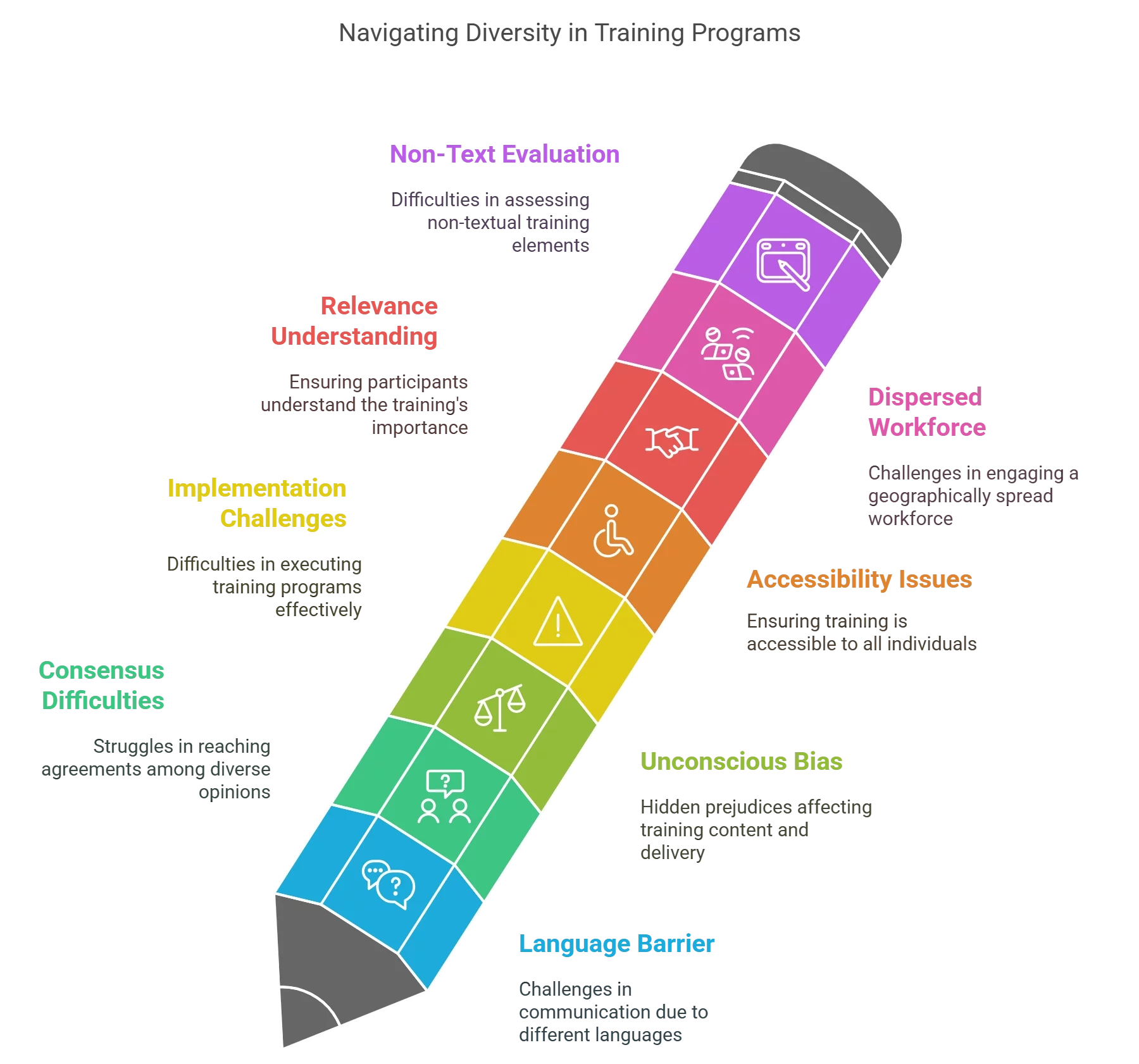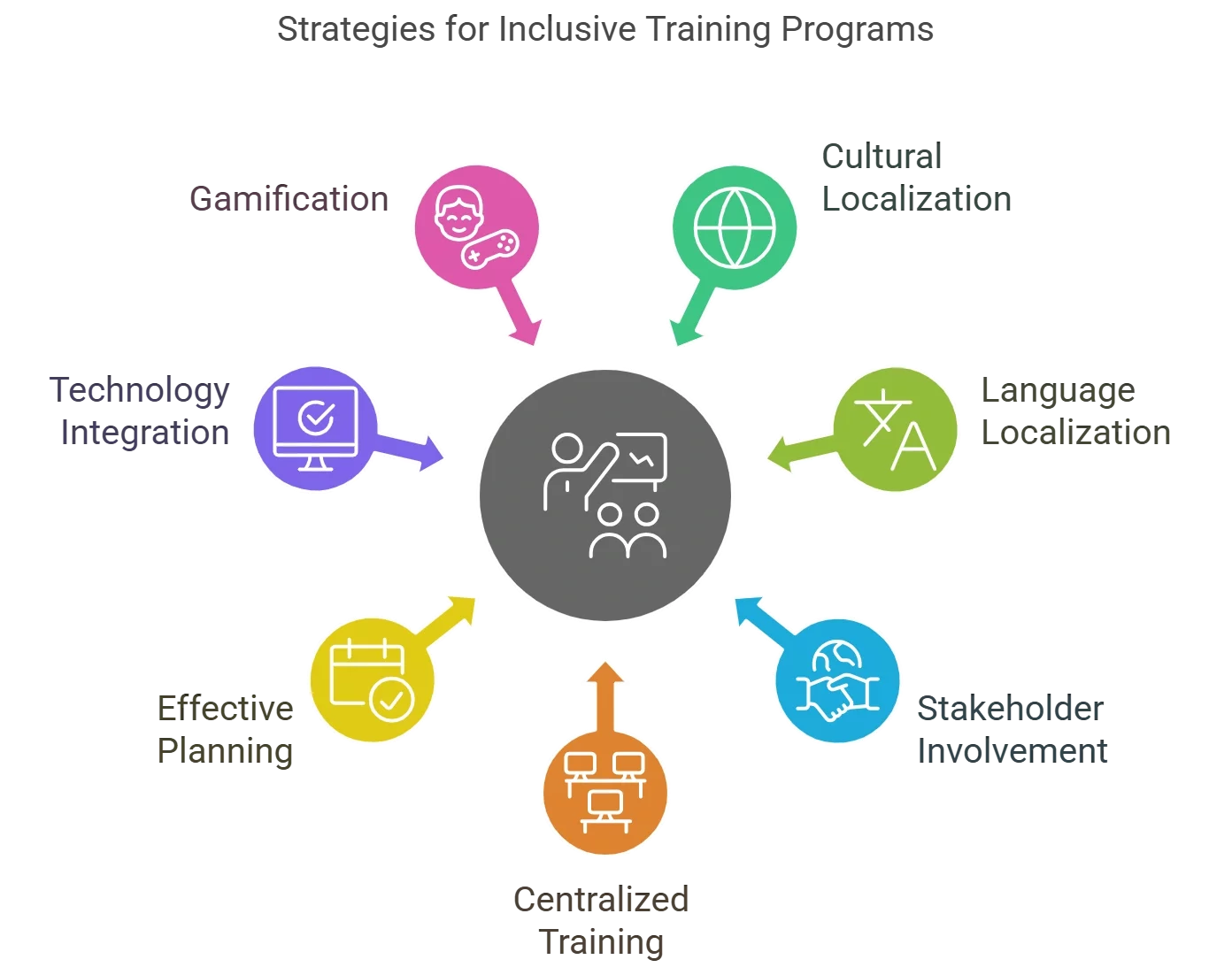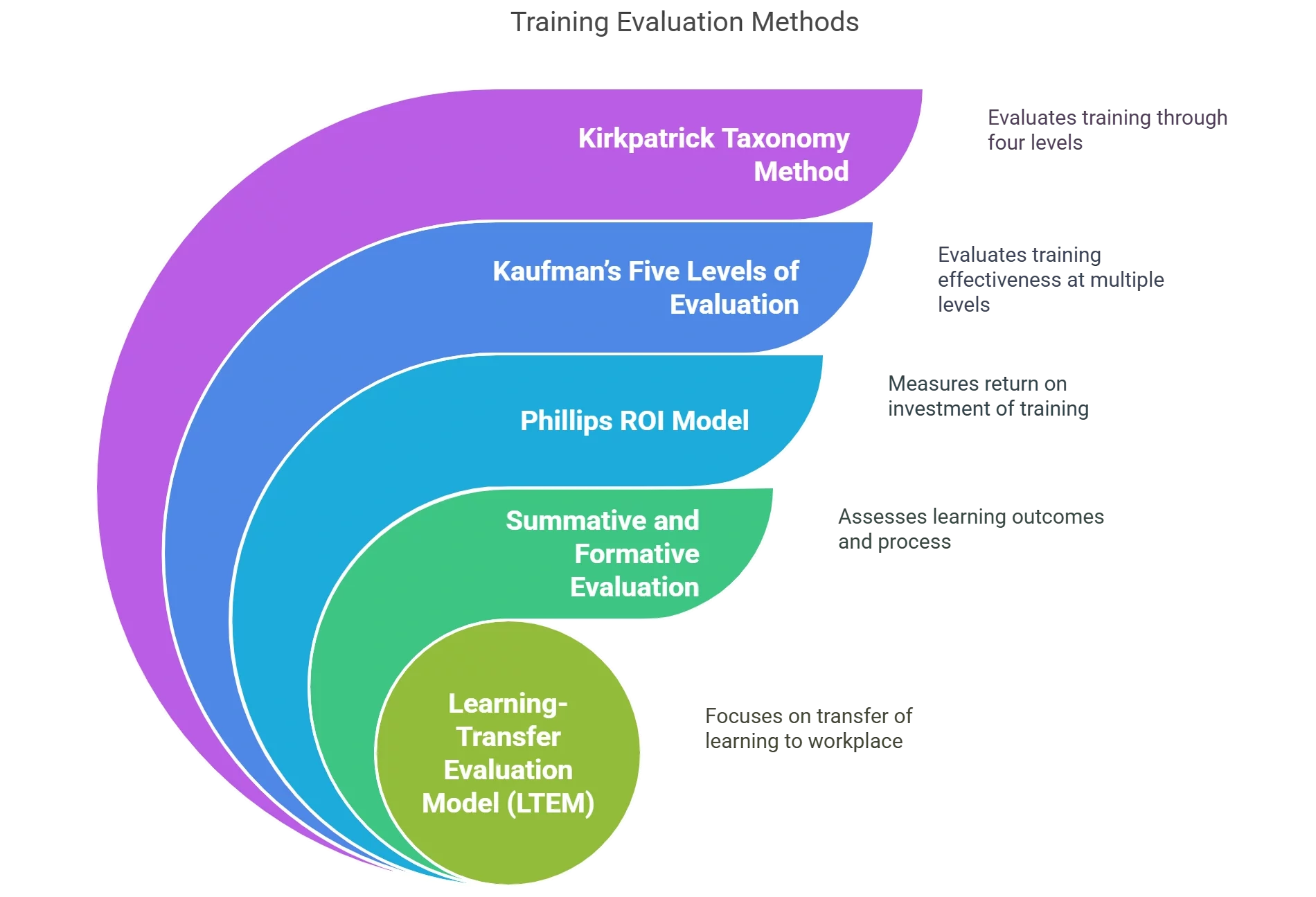
Adapting Training for a Diverse Workforce: What Works & What Doesn’t
Summarize with:
eLearning localization is the key element for building an inclusive work environment. While planning for training localization, it is essential to understand and address the community’s cultural values and preferences. By tailoring the content, businesses can bridge cultural gaps and promote understanding among a diverse workforce.
Efforts to increase inclusion and diversity in the workplace have been growing rapidly. A recent report states that in 2020, companies spent approximately $9.4 billion on Diversity, Equity, and Inclusion programs. The value of these programs is also expected to reach $24.3 billion by 2030.
eLearning localization services are a great investment as they can help organizations reach such goals. This article discusses the challenges and solutions companies should know about while making localization training programs.
Table of Contents:
- What is the Importance of Diversity in Localizing Training?
- Top 8 Challenges and Solutions of Diversity in Localizing Training Programs
- Understanding the Language Barrier
- Multiple Opinions Make it Difficult to Reach Consensus
- Unconscious Bias
- Implementation Challenges
- Accessibility for Diverse Individuals
- Failure to Understand How the Training Is Relevant
- Dispersed Workforce Makes the Learning Process Boring and Difficult
- Evaluation of Non-Text Elements
- Benefits of Localizing Training Programs
- 7 Key Considerations for Inclusive Training Programs
- Cultural and Language Localization
- eLearning Content Localization
- Involve Local Stakeholders in Training Programs for Higher ROI and Profit Margin
- Centralizing Localization Training for Business Advancement
- Planning for Effective Localization Training
- Understanding the Role of Technology in Localizing Training Programs
- Customized Gamification and Case Study Examples for Cultural Appropriateness
- What are Training Evaluation Metrics?
- Benefits of Measuring the Impact of Localized Training
- Types of Evaluation Methods to Measure the Impact of Training
- Conclusion
What is the Importance of Diversity in Localizing Training?
Diversified translation and localization training services have multiple benefits and play a crucial role in an organization’s functioning.
- Company Culture: A global workforce needs enhanced training to create a better company culture. This will lead to fairer decisions and optimal utilization of all kinds of resources.
- Equality and Awareness: No matter what language they speak or the culture they belong to, every employee gets an equal opportunity to improve their skills. This will help learners reach their full potential and make it easier to understand certain concepts.
- Benefits for Both Employees and Employers: Employers can expect a maximum return on investment due to the increased productivity of employees post-training. On the other hand, employees can improve their skills and retention power.

Top 8 Challenges and Solutions of Diversity in Localizing Training Programs
Take a look at the following challenges businesses face while planning for a diversified workforce.
1. Understanding the Language Barrier
Working with employees from across the world can lead to multiple language-related problems. Messages fail to reach the right audience if there is no direct translation available.
Failure to communicate properly can also affect the organization’s functioning, creating gaps in the decision-making process. Nonverbal communication and body language also differ from culture to culture.
To meet multicultural goals, every component of language, including words, body language, eye contact, tone, and pitch, should be acknowledged.
2. Multiple Opinions Make it Difficult to Reach Consensus
Diversity can sometimes make it difficult to reach a final decision. With different backgrounds, experiences, and opinions, it becomes difficult to reach a consensus, and many problems go unnoticed.
Solutions to problems also go unnoticed due to multiple innovative ideas and cultural or gender differences. Understanding and acknowledging the complexities is an important step while localizing training.
A decision-making committee should be formed to make the final decisions. When a consensus needs to be made, the committee of high-performing individuals can analyze and identify the best option.
3. Unconscious Bias
Unconscious bias, stereotypes, and generalizations in the workforce are often due to a lack of knowledge about diversity. With individuals working from different parts of the world, addressing and acknowledging cultural and other differences should be a business’s core goal.
Discuss the scenarios of physical, psychological, and sexual harassment to create awareness. Educate employees about the legal consequences of harassment and the ways to report it.
4. Implementation Challenges
Tailoring content based on cultural differences and experiences can be quite difficult. It can also be considered a compliance requirement instead of a genuine commitment.
This leads to backlash and resistance from the employees. Unrealistic expectations can also lead to negative outcomes, such as ethical dilemmas and legal liabilities in case of rights violations.
A well-designed program aligned with company goals should be delivered. Training programs must be implemented according to a consistent schedule. For predictable results, ensure that the training runs for the correct period.
5. Accessibility for Diverse Individuals
When training is not accessible to every participant, it can lead to an overwhelming response and complaints. The delivery of training is another issue for learners.
Not everyone learns best by watching or reading, while for some, it is a must. Training must be carried out considering each individual’s preparedness.
Draft the training program considering employees’ learning processes and journeys. It is crucial for accessibility to create content that is suitable for both real and virtual environments.
6. Failure to Understand How the Training Is Relevant
Training programs often fail when the company is unclear about their relevance. Discuss the goals, expectations, and need for training to maximize the success of a training program.
Managers and executives should take the initiative to show support and set the tone for the organization. Leaders are the drivers of change, and by sharing every individual’s experience, companies can educate employees about diversity.
7. Dispersed Workforce Makes the Learning Process Boring and Difficult
With a dispersed workforce, time zones are a major issue. Traditional training programs fail to produce the desired results because of logistical concerns. Employees often find it difficult to contact a senior regarding problem resolution.
Stakeholders, leaders, clients, and managers should participate in the implementation and evaluation process. This will foster a culture of inclusion across every team and individual. Learning content should be available in multiple forms and have flexible learning schedules.
Use tools in discussion sessions to bring the team together. Gamification is one way to make remote training fun, and it makes the learners feel like a part of the team.
8. Evaluation of Non-Text Elements
Certain non-text elements like images and multimedia components can confuse users. Images of men or women in a target market where it is not relevant can seem inappropriate. If the non-textual content is not selected correctly, it can be considered offensive and racist, and lead to negative feedback.
Content, whether music, images, videos, or animation, should be carefully analyzed before training is implemented. This way, organizations can ensure a balance between respecting cultural and organizational values.

Benefits of Localizing Training Programs
Explore the need to adopt a multicultural strategy to celebrate diversity at your workplace. Read on to discover the numerous benefits of building culturally inclusive content.
1. Improved Learning Effectiveness
Localizing training programs in the corporate world can significantly improve employee engagement and boost their performance. Cross-cultural training content is adapted to align with different cultures and is preferred by employees as it becomes relevant and relatable to them. Active use of each region’s cultural norms and communication styles leads to increased interest and active participation during training sessions.
2. Improved Cultural Sensitivity
Training programs demonstrating cultural sensitivity and inclusivity within the organization make employees feel respected and valued, fostering a positive work environment. Respecting diverse perspectives encourages employees to embrace differences and collaborate more effectively.
3. Strengthens Global Market Adaptability
Understanding different regions’ cultural, legal, and business practices allows organizations to curate their products and services more effectively. Employees who undergo localization training are better equipped to communicate and negotiate with international partners, leading to more successful business ventures.

7 Key Considerations for Inclusive Training Programs
Acknowledging the numerous benefits of offering the best localizing services in business, here are the seven key considerations when localizing training programs across different cultures.
1. Cultural and Language Localization
Corporate localization training programs should be tailored to overcome the cultural and language barriers to help businesses thrive in uncharted territories. This small tip is often overlooked by businesses that strive to earn profits but fail to comprehend the nuances of the local market. The target audience must be studied, and their nativity must be reflected in business strategies.
2. eLearning Content Localization
eLearning content localization has become crucial for international businesses seeking to expand and resonate with their diverse clients offshore. This strategy helps bridge the differences between multicultural individuals working in different regions. This personalized approach enables businesses to effectively deliver a unified message to diverse groups that align with cultural contexts, keeping the global workforce contented.
3. Involve Local Stakeholders in Training Programs for Higher ROI and Profit Margin
Given their expertise and insights into cultural, linguistic, and regional details, regional players remain undisputedly crucial for a successful global expansion. Local stakeholders can also provide feedback, suggestions, and real-life examples to level up the corporate training localization program.
Local team stakeholders can lead to a higher return on investment (ROI) and increased profit margins for the company, as they possess a deeper understanding of the region, audience, and market preferences, resulting in higher employee engagement and productivity.
4. Centralizing Localization Training for Business Advancement
Centralizing the training program ensures consistency and efficiency and streamlines management across various regions. By consolidating resources, training processes, and expertise in one centralized system, the company can maintain uniformity in content delivery while adapting to the specific local needs in training the team.
This approach to training is cost-effective, facilitates quicker updates, and reduces duplication of efforts to develop diverse regional training content. eLearning localization training modules can help reduce regional barriers in the company and optimize training quality.
5. Planning for Effective Localization Training
By anticipating the differences in the corporate space, businesses can incorporate relevant local talent for voice-overs, design graphics, and integrate local languages in the company briefs to ensure inclusivity amidst their diversity. Thus, conducting thorough research becomes crucial to providing an engaging training program that positively impacts the workspace.
6. Understanding the Role of Technology in Localizing Training Programs
Technology and localizing training programs complement each other, enhancing learning outcomes. Advanced eLearning platforms enable easy content adaptation to cater to diverse cultures and languages. Although we understand that localizing training programs goes beyond mere translation, technology is essential to check for quality-assured content delivery in your local language.
You can now easily localize your eLearning content with iSpring, Adobe Captivate, and Articulate Storyline into globally acceptable formats. Thus, training programs can be fully optimized by harnessing technology’s power and innovative tools.
7. Customized Gamification and Case Study Examples for Cultural Appropriateness
Another way to create an immersive workplace experience is to introduce games, scenarios, and challenges that align with the participants’ cultural interests. These interactive simulations challenge employees to look beyond foreseen circumstances and incorporate their regional understanding in capacity building and problem-solving. This eventually enables employees to navigate diverse business landscapes with ease.
Now that you know what you need to make an inclusive training program, how do you measure it?
Businesses and EdTech companies worldwide are switching to an eLearning localization strategy for workforce training. According to research, the localization training software market reached USD 4.51 billion in 2021 and is expected to reach USD 6.64 billion by 2030. Localized training helps employees to connect with specific target groups and build a better brand.
It benefits the learner as they don’t need to know one specific language to complete the training. With every training and development plan, you expect to gain skills that will lead to more productivity. After deciding on a localization strategy, it is essential to raise questions about the effectiveness of the training.
Were the learners able to gain useful knowledge? Did the learners gain new skills to improve their performance at work? These questions will help you to analyze the outcome of your company’s localized training program.
In addition, certain evaluation methods and key metrics can be used to measure the impact of software localization.
What are Training Evaluation Metrics?
Training evaluation metrics are specific criteria used to analyze and measure the effectiveness of a training program and software localization. Understanding training metrics will help you save time and money while building an effective training program.
It will help you understand how well the software localization services are working and the changes that need to be made to maximize your investment. There are different evaluation metrics that you should check, but it mostly depends on the specific type of training program.
Benefits of Measuring the Impact of Localized Training
Localized training allows employees to improve performance and strengthen business goals. By tracking different types of data, companies can identify the training methods that need more attention.
Apart from these, some benefits of training evaluation are mentioned below:
- Evaluation of training programs provides proper feedback. This makes it easier to identify program loopholes and make changes wherever necessary to make them more accessible.
- Training evaluation leads to accountability by meeting all types of competency gaps and ensuring that deliverables are not compromised.
- Upon proper evaluation of training, the programs ensure an improvement in the quality of work and the development of new skills among the employees. This leads to a cost-efficient system.

Types of Evaluation Methods to Measure the Impact of Training
Different evaluation methods can be used to measure the impact of localized training on businesses. Here, we have discussed some of the best evaluation methods.
1. The Kirkpatrick Taxonomy Method
One of the most widely used models is the Kirkpatrick Method, which consists of four evaluation levels: Reaction, Learning, Behavior, and Results. The learner’s reaction to the training is measured first, and the next level measures how much each participant has learned.
Behavior includes observing how they have applied the skills while working, and finally, the results include the effect of training on the organization. The data for each level is collected using various tools such as feedback, performance reviews, customer satisfaction scores, quizzes, tests, and more.
2. Kaufman’s Five Levels of Evaluation
This popular method is built on the Kirkpatrick model. It involves multiple levels and considerations. The first two levels include Input and Process, which focus on the learning materials and deliverables.
The evaluation results are available in three types:
- Micro-Level Results: Check if the learner can apply the knowledge to their job.
- Macro-Level Results: Analyze performance to keep track of improvement at an organizational level.
- Mega-Level Impact: Takes into account the change that the learner can create in society or stakeholder groups.
3. The Phillips ROI Model
The Phillips ROI model is similar to the Kirkpatrick model but has an extra step. It calculates the return on investment by calculating the difference between the cost and the results.
The first step involves collecting pre-program and post-program information from multiple sources, such as supervisors, organizational records, and peer groups. The next step involves identifying the factors that improve work performance.
The data is then converted to monetary values, and the ROI is calculated using a formula. If the training results exceed the cost, it is considered a positive ROI.
4. Learning-Transfer Evaluation Model (LTEM)
LTEM follows an eight-step assessment plan: Attendance, Activity, Learner Perceptions, Knowledge, Decision-Making Competence, Task Competence, Transfer, and Effects of Transfer.
The first two levels of this model act as a foundation for every succeeding step. They provide an overview of the qualitative and quantitative concepts you can use to analyze your employees’ learning processes.
The first four levels are related to the learner’s interaction process. Starting from the fifth level, you can get an insight into the effectiveness of the training.
5. Summative and Formative Evaluation
Assess a training program during its developing stage (formative evaluation) and its delivered stage (summative evaluation).
A formative evaluation can be conducted by reviewing the training materials with a group of trainees. Understanding the impact of the material and holding group discussions to note down feedback.
On the other hand, summative evaluation can be done by testing employees on how well they have grasped the information. The second step includes asking about their opinion about the program and conducting surveys or interviews to analyze. Measure the changes in terms of work quality during the post-training period.
Conclusion
Every business must prioritize diversity. Pair the training program with mentorship events and diversified recruitment programs. To meet the goals, try choosing the localization training services companies offer.
Training should be tailored to the company’s needs and tracked to achieve desired results. Regarding localizing training, Hurix Digital is the best partner for all kinds of company goals.
Work with experts to create tailored content and fill the gaps in cross-cultural communication. Contact our team of experts today!
Summarize with:

Senior Vice President
Julia brings over 20 years of global experience in digital learning and business strategy. She specializes in client success, enterprise learning solutions, and driving growth through innovation, with a focus on AI, VR, and emerging technologies across diverse industry verticals.
 Upcoming Masterclass | Build an Army of Brand Evangelists using Training & Development | November 20th, 8:30 AM PDT | 11:30 AM EDT | 10:00 PM IST
Upcoming Masterclass | Build an Army of Brand Evangelists using Training & Development | November 20th, 8:30 AM PDT | 11:30 AM EDT | 10:00 PM IST




